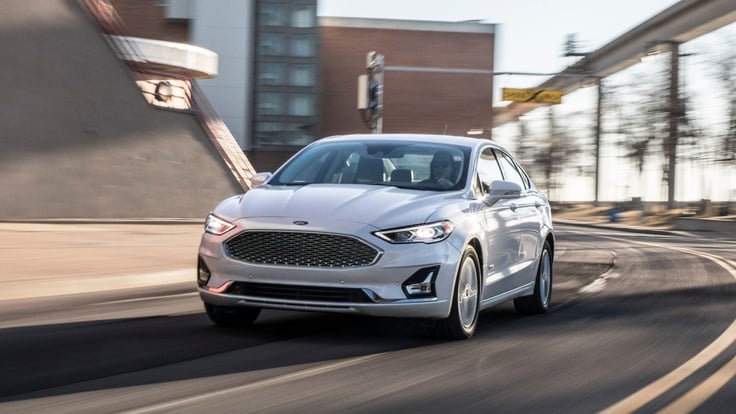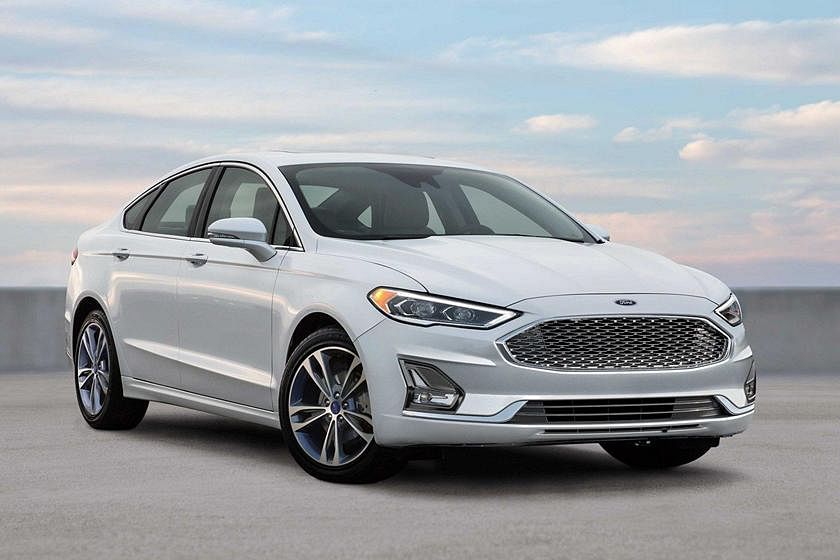
#Ford fusion models compared driver#
Other than those issues, I found route guidance worked very well, using traffic data to route around jams and giving voice prompts in plenty of time for the driver to recognize a turn. The navigation system slowly loads its maps, a process that should happen much more quickly. The navigation system processing is also a little slow, taking too long to redraw the map. However, I still got bogged down in navigation system menus, finding it hard to back out to a main destination screen without a lot of button pushes. The Fusion seems to have a better GPS antenna than other Ford models I've tested, as the navigation system never had a problem pinpointing the car's location. I have complained about the navigation system in MyFord Touch in past vehicles, but here I found one major issue addressed. Once you get used to the commands, it is easier to request a song, enter a destination, and even set the temperature by voice than with the touch screen. However, voice command in the Fusion works exceedingly well, and let me control just about any in-cabin system. There was often lag between the time I touched a virtual button and the system's response. The center touch screen suffers from the same slow response that I've seen with this system in other Ford models. LCDs to either side of the speedometer show useful information, and allow control over cabin tech functions. The blind-spot monitoring system, another favorite safety feature of mine, lit up dots in the side mirrors whenever another car was traveling off the Fusion's rear quarter, letting me know if it wasn't safe to change lanes. This system worked very well, even when I activated it in a traffic jam with cars going 20 mph. A button on the steering wheel let me set the following distance. With this feature, I set my speed, usually on a freeway, and the Fusion automatically slowed down for traffic up ahead, matching the speed of other cars. The same instrument cluster icon that shows the lane-keeping feature also displays lines showing the adaptive cruise control's following distance. Going over rough roads, the suspension competently dampens the bumps and also prevents back-and-forth oscillation. The suspension tuning comes in on the stiff side, preventing wallow in the corners. It handles comfortably, with a bit of understeer. Of course, the Fusion is not really a sports car, which makes the Sport mode on the transmission a little odd. The front end of the Fusion, with its geometric grille and narrow headlight casings, looks particularly good. The Drive mode tends to reach for the highest gears, short-shifting so as to lose the power bands. Its Sport mode made the Fusion more enjoyable to drive, with stronger, more even acceleration on tap. The automatic transmission felt pretty typical, delivering slushy torque converter gear changes. The lag was in no way a serious problem it just meant the occasional late boost. At lower speeds, it felt like turbo lag, while at higher speeds the transmission was a little slow to kick down. However, in more common driving situations, such as cruising at 35 mph and suddenly looking for a burst of acceleration, there was some obvious lag.
#Ford fusion models compared full#
When I floored the gas pedal from a dead stop, the Fusion hustled forward, bringing the full power of the engine to bear as the transmission let the rpms climb. The power from the Fusion's EcoBoost engine was easy to find as I drove the car, although it didn't always come on evenly. Where I might get too close to the curb and scratch a rim, the Fusion's parking system won't. Living in San Francisco, I am a very experienced at parallel parking, but even so, I don't get it right 100 percent of the time, so I am happy to let the car execute this maneuver.

At the same time, EPA fuel economy comes in at 22 mpg city and 31 mpg highway, the all-wheel-drive option bringing it down a little over the front-wheel-drive version. That engine uses direct injection and a turbocharger to achieve 240 horsepower and 270 pound-feet of torque, excellent numbers for a 2-liter four-cylinder. In Titanium trim, the car gets Ford's 2-liter EcoBoost engine. As such, it priced out in the mid-$30s a bit hefty, but most premium-level sedans would come in $10,000 or $15,000 more, similarly equipped. The car delivered to CNET was a 2013 Ford Fusion Titanium with all-wheel drive and a number of optional packages.

More exciting are the driver assistance features, which let the car almost drive itself.

In the cabin, the Fusion gets the MyFord Touch system, combining navigation, hands-free phone, and digital audio in one interface. At the same time, Ford takes a technological lead, fitting the newest Fusion with an engine exhibiting the latest in efficiency engineering.


 0 kommentar(er)
0 kommentar(er)
